Years of service 1861 - 1865 Name William Palmer | ||
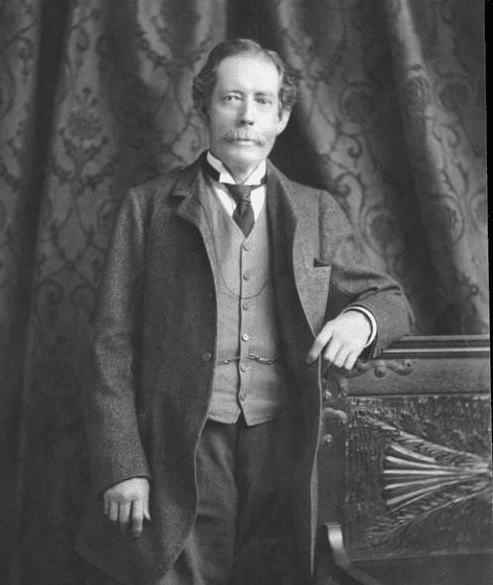 | ||
Born September 18, 1836Leipsic, Delaware, USA ( 1836-09-18 ) Allegiance United States of AmericaUnion Service/branch United States ArmyUnion Army Books Report of surveys across the continent Organizations founded Denver and Rio Grande Western Railroad, Colorado Coal and Iron Company | ||
General william jackson palmer 1990 colorado business hall of fame laureate
William Jackson Palmer (September 18, 1836 – March 13, 1909) was an American civil engineer, soldier, industrialist, and philanthropist. During the Civil War, he was promoted to Brigadier General (brevet) and was a Medal of Honor recipient.
Contents
- General william jackson palmer 1990 colorado business hall of fame laureate
- William jackson palmer
- Early life
- Pennsylvania railroads
- Civil War service
- Kansas Pacific Railway
- Denver and Rio Grande Railway
- Rio Grande Western Railway
- Mexican National Railway
- Colorado Springs and Manitou Springs
- Colorado Coal and Iron Company
- Personal life
- Marriage
- Retirement
- Legacy
- Medal of Honor citation
- References
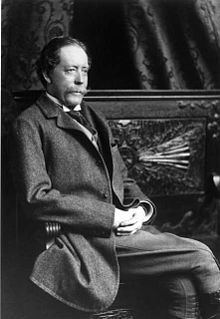
Palmer's early career helping build and develop the expanding railroads of the United States in Pennsylvania was interrupted by the American Civil War. He served in colorful fashion as a Union Army cavalry Colonel and was appointed to the brevet grade of Brigadier General. After the war, he contributed financially to educational efforts for the freed former slaves of the South.
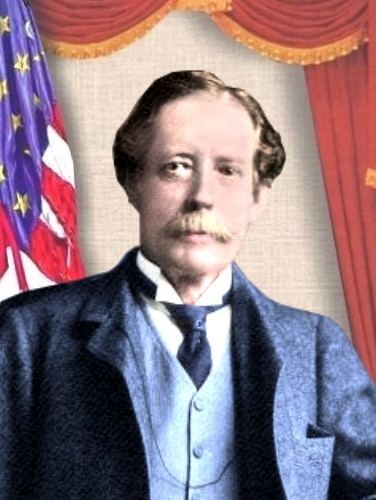
Heading west in 1867, while Palmer helped build the Kansas Pacific Railway he met a young English doctor, Dr. William Abraham Bell who became his friend and partner in most of his business ventures in which we would generally find Palmer as president with Bell as vice president. The two men are best known as co-founders of the Denver and Rio Grande Western Railroad (Rio Grande). The Rio Grande and its successors eventually operated the largest network of narrow gauge railroad in the United States, and ultimately became part of the 21st century Union Pacific Railroad.
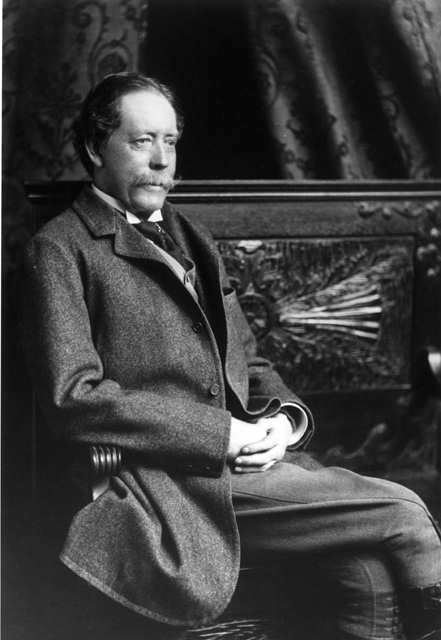
Palmer and Bell are notable for observing in Great Britain (Bell's country of origin) and helping introduce to the United States railroads, the practices of burning coal (rather than wood) and the use of narrow gauge railroading. He helped develop rail-related industries in Colorado, such as a large steel mill near Pueblo. He was the founder of the new city of Colorado Springs, in 1871, as well as several other communities. After moving west, Palmer continued his philanthropic efforts in his adopted home, particularly educational institutions of higher education. Public schools in Colorado Springs were named for both him and his wife, Mary (née Mellen) Palmer, who was known by her nickname of "Queen". A statue of Palmer also exists in downtown Colorado Springs, across from the school named in his honor.
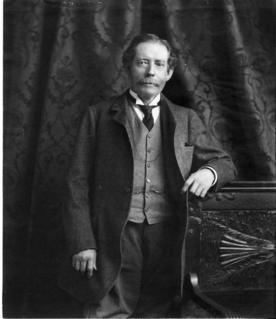
William jackson palmer
Early life
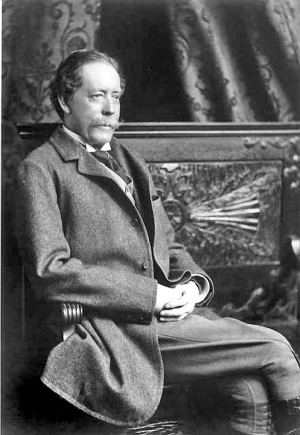
William Jackson Palmer was born to a Hicksite sect Quaker family near Leipsic, Kent County, Delaware on Kinsdale Farm in 1836. His parents were John and Matilda (Jackson) Palmer. When he was five years old, his family moved to Germantown in Philadelphia, Pennsylvania, where he attended Friends School, Zane Street School, and Boys' High School.
Pennsylvania railroads
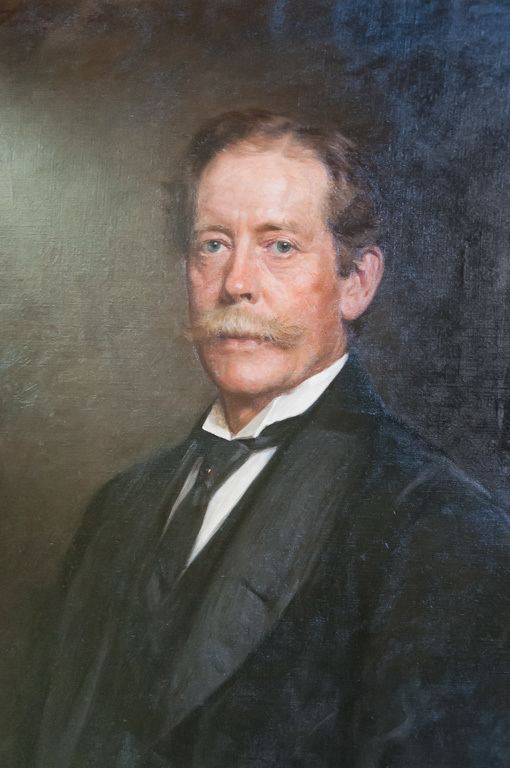
In 1851, Palmer went to work in western Pennsylvania for Hempfield Railroad's engineering department as a clerk. Two years later, at age 17, he worked under chief engineer Charles Ellet, Jr. as a rodman. Palmer became transitman for Hempfield in 1854.

Frank H. Jackson, president of Westmoreland Coal Company and Palmer's uncle, encouraged him to go to England to study coal mining and railroads. Palmer was particularly interested in running railroad engines on anthracite coal. He left in the summer of 1855 for a six-month period and wrote articles for Miner's Journal of Pottsville, Pennsylvania to finance the trip abroad. He also borrowed money from his uncle. While in England, he met with noted railroad engineers—like Isambard Kingdom Brunel and Robert Stephenson—and visited railroads, mills, and coal mines.
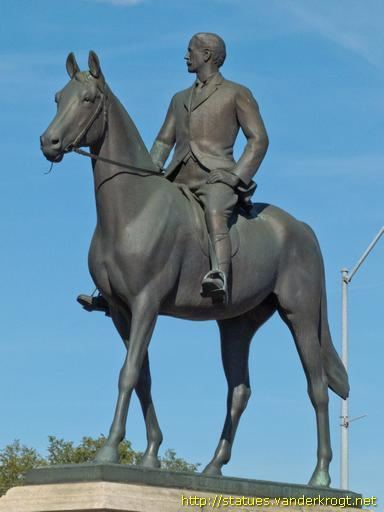
Palmer went to work in 1856 for Westmoreland Coal Company as secretary and treasurer. The following year he worked at Pennsylvania Railroad and became private secretary to President John Edgar Thomson, a successful Quaker businessman, at a time when Andrew Carnegie was a peer and secretary to a company vice president. Palmer wrote, Reports of Experiments with Coal Burning Locomotives and learned about running a railroad from Thomson. Palmer began an evaluation of converting engines to run on coal, which was more abundant, rather than wood. His findings were key to changing the type of fuel used to run the country's locomotives. He began a relationship with Thomas A. Scott at Pennsylvania Railroad, who became Assistant Secretary of War in charge of military transportation during the Civil War.
Civil War service
As the American Civil War began in 1861, although his Quaker upbringing made Palmer abhor violence, his passionate abolitionism compelled him in keeping with the dictates of his conscience to enlist in the Pennsylvania volunteers. Palmer took a commission in the Union Army. He organized the Anderson Troop, an independent company of Pennsylvania cavalry, in the fall of 1861 and was elected its captain. Originally formed to act as a bodyguard for Brig. Gen. Robert Anderson, it instead served as the headquarters cavalry for General Don Carlos Buell, commanding the Army of the Ohio. Impressed with the "elite scouts" that Palmer had assembled, Buell detailed Palmer and 12 of his men to go back to Pennsylvania to recruit more men to form a battalion around the Anderson Troop that would be known as the "1st Anderson Cavalry".
In ten days of recruiting, however, Palmer received enough applications for enlistment to form a regiment, which was authorized as the 15th Pennsylvania Cavalry. He was appointed the regiment's colonel. Before Palmer was able to organize the regiment at Camp Alabama in Carlisle, Pennsylvania, he and a portion of it were ordered on September 9 to help the Army of the Potomac resist the Confederates invasion of Maryland. For nearly a week Palmer, accompanied by a telegrapher, personally sought information of Lee's movements every night in civilian clothing, and transmitted his findings to General George B. McClellan via telegraph connections.
Two days after the Battle of Antietam, Palmer was captured while scouting at the personal direction of McClellan, seeking information on any preparations by Lee's army to cross the Potomac River back into Virginia. He was on the Confederate side of the river, again garbed in civilian clothes and accompanied by a local blacksmith and a parson as his guides, attempting to recross to the Union side after midnight when he was captured by Confederate artillerymen sent to guard the dam he used for the crossing. When questioned, Palmer gave his name as "W.J. Peters," and claimed to be an engineer on an inspection trip. He was interrogated by General William N. Pendleton, who thought he was a spy. He was detained and sent to Richmond, Virginia, with a rambling note from Pendleton that was ignored.
Palmer was incarcerated at the notorious Castle Thunder prison on Tobacco Row, Richmond where his true identity was never uncovered. Doubts about his identity were apparently reinforced by publication of a fictitious dispatch in the Philadelphia newspapers that purported that Palmer was in Washington, D.C. after scouting in Virginia. When he was freed after four months of confinement, he found that his guide, the Reverend J.J. Stine, had escaped but been arrested by Union authorities, accused of betraying him to the enemy. Rather than risk Palmer's life by publication of the circumstances in the Northern press, Stine had remained imprisoned in Fort Delaware until Palmer's personal application to Secretary of War Edwin Stanton resulted in his release.
Palmer was set free in a prisoner exchange for a prominent Richmond citizen, recuperated two weeks, and rejoined his regiment in February 1863. During his period of imprisonment, the regiment had become mutinous because of a failure to have officers appointed and other enlistment inducements it felt had not been honored. 212 troopers faced court-martial and the possibility of going before a firing squad for refusing to fight in the Battle of Stone's River. Palmer reorganized the regiment, personally appointed officers in whose abilities he had great trust, and had the charges against the confined soldiers dropped on the condition that they behaved going forward. The severely demoralized group of men rallied and distinguished themselves during the 1863 Tullahoma Campaign, the Battle of Chickamauga, the capture of Brig. Gen. Robert B. Vance's raiding cavalry and re-capture of 28 wagons of a foraging train in January 1864, and the Franklin–Nashville Campaign.
At Chickamauga, Palmer's regiment was detailed as headquarters guard for the Army of the Cumberland with many troopers doled out to the various corps as couriers and scouts. When Longstreet unexpectedly attacked the union right near Rosecrans' headquarters, Palmer gathered all the men of his regiment available and prepared to counterattack with a saber charge. The Union right flank dissolved, however, and after attempting to rally the panicked infantry, his regiment crossed the battlefield in good order under Confederate artillery fire to protect the Union artillery. During the army's retreat to Chattanooga, the 15th Pennsylvania provided escort for the army's supply train. Not easily impressed, Major General George H. Thomas (the "Rock of Chickamauga") recommended that Palmer receive a brigadier's star for his success at turning a highly demoralized group of men to an effective group of soldiers.
Palmer was vigorous in pursuing Confederate General John Bell Hood after the Battle of Nashville in 1864. On March 9, 1865, President Abraham Lincoln nominated Palmer for appointment to the brevet grade of brigadier general of volunteers at the age of 28, with the U.S. Senate confirming the appointment on March 10, 1865. On March 16 he was promoted to command of the 1st Brigade of the Cavalry Division, District of East Tennessee, consisting of the 15th Pennsylvania, the 10th Michigan and the 12th Ohio Cavalry Regiments. A month later he assumed command of the division after General Alvan C. Gillem was promoted to command of the District of East Tennessee.Palmer was in the vanguard of Stoneman's (Union General George Stoneman) raid into Virginia and North Carolina in the last two months of the Civil War. At Martinsville, Virginia on April 8, 1865 Palmer's cavalry defeated a Confederate force of Cavalry commanded by Colonel James Wheeler, the cousin of Confederate Cavalry commander Fighting Joe Wheeler. If Palmer had pushed on to Danville, only 20 miles to the north, he might very well have captured Jefferson Davis, who up till then had not left the last capital of the Confederacy (Davis left the next day, upon receiving word of Lee's surrender). This was a little-known campaign immortalized in the Band's epic, "The Night They Drove Old Dixie Down".
Palmer commanded the cavalry pursuit of Jefferson Davis following the surrender by General Joseph E. Johnson. Davis was followed through North Carolina, South Carolina, and Georgia and driven into the hands of General James H. Wilson. During the pursuit Palmer's former command overtook and captured near Covington, Georgia wagons carrying millions of dollars of specie, bonds, securities, notes, and other Confederate assets that had been kept in the Bank of Macon (Georgia). Palmer was mustered out of the Union Army on June 21, 1865.
General George Henry Thomas wrote of Palmer:
There is no officer in the regular or volunteer service who has performed the duties which have devolved upon him with more intelligence, zeal, or energy than General Palmer, whose uniform distinguished success throughout the war places his reputation beyond controversy.
On February 24, 1894, Palmer was awarded the Medal of Honor for his actions as colonel leading the 15th Pennsylvania Cavalry at Red Hill, Alabama, January 14, 1865 where "with less than 200 men, [he] attacked and defeated a superior force of the enemy, captured their fieldpiece and about 100 prisoners without losing a man." Six former officers of the 15th Pennsylvania Cavalry had nominated him the previous October to receive the honor, but for the scouting efforts in mufti during the Antietam Campaign that resulted in his capture. The War Department rejected that nomination on the basis that the acts, while valorous, had not been performed of a field of battle. They then submitted a new nomination for the action at Red Hill, which was approved.
Kansas Pacific Railway
After the War, Palmer resumed the railroad career he had started previous to the conflict. In 1867, a very optimistic, eager 30-year-old Palmer, and his 21-year-old chief assistant Edward Hibberd Johnson, headed west from their hometown of Philadelphia, Pennsylvania. Palmer worked the Kansas Pacific Railway first as secretary and treasurer and then as managing director responsible for extending service through south central Colorado. With Kansas Pacific chief engineer Colonel William Henry Greenwood, Palmer organized a surveying expedition that recommended in 1868 that the route to the coast be diverted at Ellsworth, Kansas to Pueblo, Colorado and through the Royal Gorge to the San Luis Valley where it would turn south to Santa Fe, New Mexico. The route was rejected by the Kansas Pacific's board of directors in favor of a line through Denver, which was completed in 1870.
Denver and Rio Grande Railway
While in the Colorado Territory, Palmer went to Colorado City (now Old Colorado City) to consider a north-south route from Denver for his own railway. Palmer had a vision to build a railroad south from Denver through New Mexico and El Paso to Mexico City. Palmer founded—with Greenwood, Colonel D.C. Dodge, Governor Alexander Cameron Hunt, Charles B. Lambord and others—and was elected president of the Denver and Rio Grande Railroad in 1870.
The first section of the railway included the first 3 ft (914 mm) narrow gauge railroad tracks in the West. The line ran south of Denver and across the Palmer Divide, which separates the Platte River and Arkansas River watersheds, and to Colorado Springs by 1871. The line went to Pueblo in 1872, and further south to coal fields beyond Trinidad in 1873. The railroad had service along the Arkansas River canyon to other coal mining locations, to the metal mining town of Leadville, and the iron mines in Saguache County, Colorado. Palmer stepped down as president in 1883 to focus greater attention on developing the Mexican line.
Rio Grande Western Railway
Palmer was president of the Rio Grande Western Railway from 1881 or 1883 to 1901. He built lines from the terminus of the Denver and Rio Grande Western Railway in Grand Junction to the Utah cities of Ogden and Salt Lake City. This provided direct service from Denver to Utah via narrow-gauge railway.
Mexican National Railway
In the spring of 1880, Palmer was made president of the Mexican National Railway (now National Railroad of Mexico). He hired Greenwood again as chief engineer in May, only to have Greenwood robbed and murdered on a survey near Mexico City on August 29. Most of the line was completed by 1883. The railroad made it to Mexico City.
Colorado Springs and Manitou Springs
Palmer came to the Colorado Territory as a surveyor with the Kansas Pacific Railway in search of possible railroad routes. Dr. William Abraham Bell from England was also part of the survey party. On July 31, 1871, Palmer and Bell founded Fountain Colony (later Colorado Springs), downstream of Colorado City, and it was laid out by the Colorado Springs Company that year. It was named for three natural mineral springs near Monument Creek or the springs in nearby Manitou Springs.
He also founded the town of Manitou (later Manitou Springs) as a resort town at the base of Pikes Peak. Palmer spent about $1,000,000 (equivalent to $27,298,966 in 2016) on the construction of roads and development of parks in Manitou Springs, Old Colorado City, Colorado Springs, and Manitou Park.
In Colorado Springs, Palmer provided funding for Colorado College and within two years, Colorado Springs the town had 1,500 residents, schools, churches, banks, and a newspaper. Palmer donated land to establish the first city park, Acacia, and additional parks: Antlers Park, Monument Valley Park, North Cheyenne Cañon Park, Palmer Park, Pioneer Square Park (South Park), Prospect Lake and Bear Creek Cañon Park. He donated a total of 1,270 acres of land, some of which was also used for scenic drives, tree-lined roadways and foot and bridle paths. Palmer also provided the funding for a school for the deaf, a tuberculosis sanatorium, and libraries. With the land that he also gave for parks, churches, libraries, hospitals, and schools, he donated a total of 1,638 acres. Palmer founded the Colorado Springs Gazette newspaper.
In 1883, he built the Antlers Hotel. When it burned down in 1898, he rebuilt the hotel with Italian Renaissance architecture.
Other towns were founded by Palmer along his railoroad lines, include Salida, Alamosa, and Durango.
Colorado Coal and Iron Company
Palmer envisioned "an integrated industrial complex based on steel manufacturing" in which all necessary resources were controlled by one company. In 1880, Palmer constructed Colorado Coal and Iron Company's (CC&I) steel mill south of Pueblo and laid out the town of Bessemer (now incorporated in Pueblo). The Minnequa plant became one of the greatest iron and steel plants in the country. His dream became a reality for his successors when, in 1892, CC&I merged with the Colorado Fuel Company to form Colorado Fuel and Iron.
Personal life
Over the course of his life, Palmer was a member of the Denver Club, Colorado Springs Country Club, El Paso Country Club, City Midday Club (New York), and the Metropolitan Club (New York). William Palmer built & opened The General Palmer Hotel in Durango, Colorado in 1898. As one of Durango's founding fathers it's elegance reflected his style. It remains today as the only AAA 4-Diamond Hotel in southwestern Colorado.
Marriage
Palmer met Mary Lincoln (Queen) Mellen in April 1869 while she and her father, William Proctor Mellen, were on a train returning from a trip to see the West. They were married November 7, 1870 in Flushing, New York where the Mellen family lived at the time. They spent their honeymoon in Europe. They had three daughters, Elsie, Dorothy, and Marjory.
Palmer built his Glen Eyrie, Scottish for "Valley of the Eagle's Nest," in 1871 near Colorado Springs. Queen taught at Colorado Springs' first school.
Palmer had apartments in London and New York, a castle near Mexico City, and property throughout Colorado. The Palmers traveled frequently with their children and governesses to New York and London for William's business and lived part-time at Glen Eyrie in Colorado.
Queen was of frail health possibly aggravated by living at high altitude. While pregnant with their middle daughter Dorothy in 1880, Queen suffered a heart attack in Leadville during a vacation. Dorothy was born a few weeks later at Glen Eyrie. Then, their third daughter, Marjorie, was born in England. Two maids and a doctor had accompanied them on the trip. Over the next four years, Queen often lived on the East Coast or England, with visits by Palmer. In 1885, she left Glen Eyrie permanently, needing to live at a lower altitude. About 1887, Queen and the girls lived permanently in England including renting Ightham Mote in Kent for 3 years. William and Queen vacationed in France and Italy in the spring of 1889. Queen died in England on December 27, 1894, at the age of 44.
Retirement
When Palmer retired from business, he devoted himself to philanthropic endeavors, giving away $4 million (equivalent to $106,622,222 in 2016). In the autumn of 1906, Palmer suffered a fall from a horse and was partially paralyzed. Left with a broken spine, Palmer was thereafter confined to a wheelchair.
Unable to travel, Palmer hosted the veterans of his 15th Pennsylvania Volunteer Regiment troopers for their annual reunion in August 1907 at Glen Eyrie. He provided a special train and paid the travel expenses for 208 of about 260 surviving veterans. Mrs. J.A. Hayes, the wife of a prominent Colorado Springs banker and daughter of Jefferson Davis, was an honored guest at the reunion.
William Jackson Palmer died on March 13, 1909 at the age of 72. On the day of his death schools, businesses, and trains stopped and flags flew at half mast in Colorado Springs. The mayor said Palmer was "the soldier, the builder of an empire, the philanthropist, the friend of the people, whose life was a blessing." Gazette journalist Dave Phillips said that he was "an ardent pacifist, humanitarian and champion of preserving wildlands at a time when conservation was almost unheard of." His and Queen's ashes are buried at Evergreen Cemetery in Colorado Springs, Colorado.
Legacy
Medal of Honor citation
Colonel William J. Palmer of the 15th Pennsylvania Cavalry received the Medal of Honor on February 24, 1894 for his service on Red Hill, Alabama on January 14, 1865: "With less than 200 men, attacked and defeated a superior force of the enemy, capturing their fieldpiece and about 100 prisoners without losing a man."The medal is on permanent display at the Colorado Springs Pioneer Museum.
